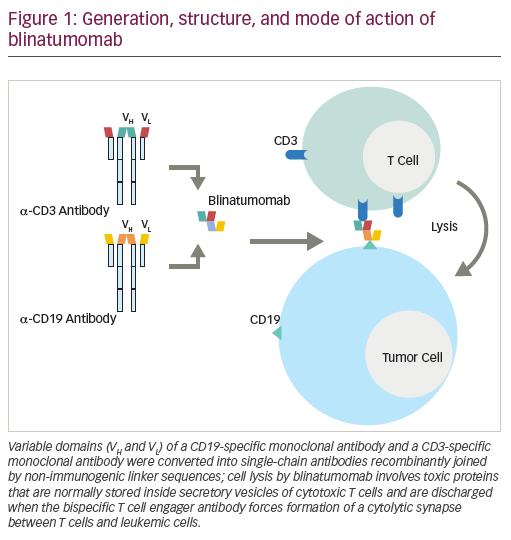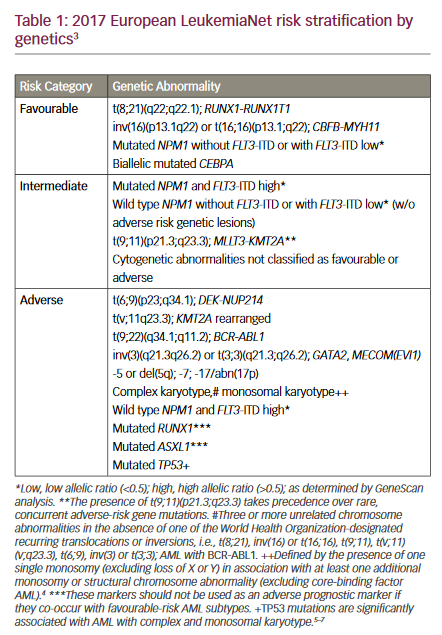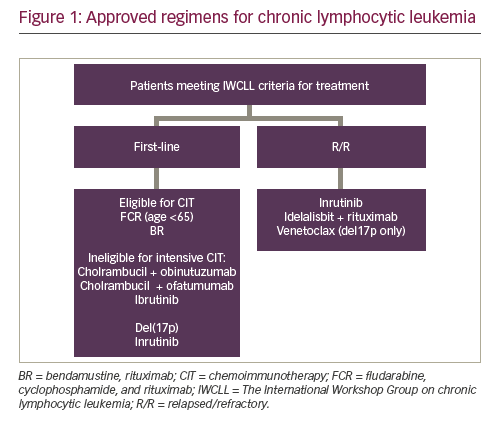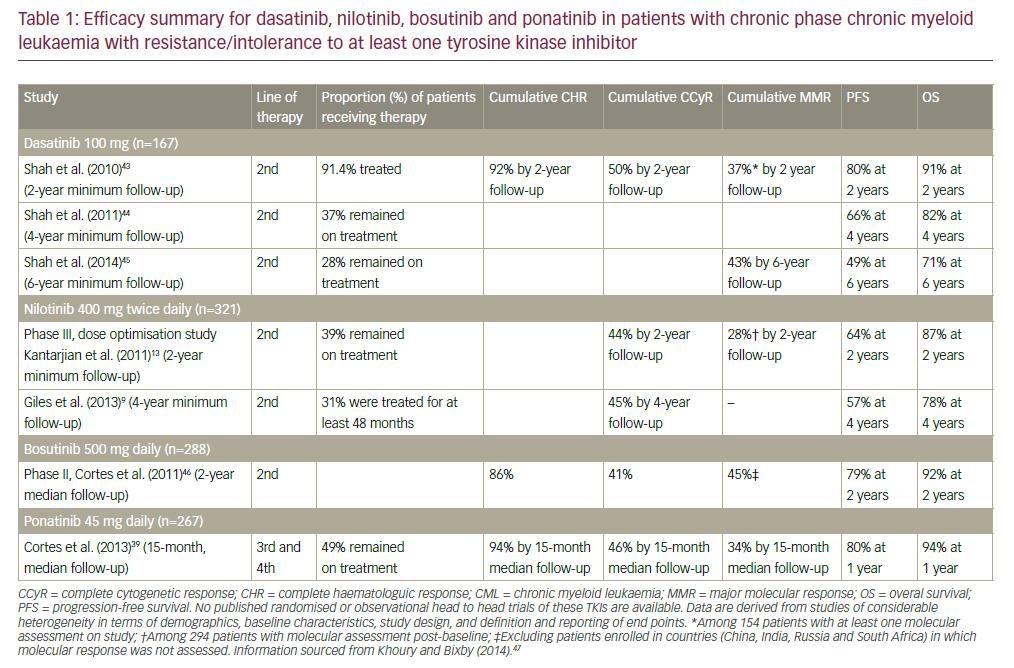Large granular lymphocytic (LGL) proliferations comprise a spectrum of conditions ranging from reactive non-clonal and self-limited LGL expansions to asymptomatic or frank leukaemic clonal LGL disease. They are defined by the polyclonal, oligoclonal and/or clonal expansion in the blood and bone marrow or, rarely, in other tissues of a lymphocyte with a distinct morphology for this designated LGL. Polyclonal expansions of LGL are usually transient and due to a viral infection such as Epstein-Barr virus (EBV), solid tumours, connective tissue disease, etc.,1 or develop post-splenectomy. This is in contrast to clonal LGL proliferations, which are sustained whether the patients are symptomatic or not. Oligoclonal and clonal expansions of T-cell LGL have been reported in patients with B-cell neoplasms2 following allogeneic bone marrow transplant3 or rituximab treatment for a B-cell lymphoma. These latter likely are the result of a profound B-cell depletion4 and a disturbance of the immunity.
In normal individuals, a minority of circulating blood lymphocytes display the morphological characteristics of LGL. The majority of these lymphocytes have a cytotoxic T-cell phenotype (CD3+ CD8+ CD4–) or correspond to natural killer (NK) cells (CD3– CD56+). Clonal expansions of LGL may comprise T- and NK-cell-derived diseases. The World Health Organization (WHO) considers two categories: T-cell LGL leukaemia and chronic lymphoproliferative disorders (CLD) of NK cells,5 the latter being considered a provisional entity.
We will focus on the clinical features, diagnosis, biology and molecular characteristics of the clonal T-cell LGL leukaemia and CLD of NK cells.
Aetiology
The aetiology of T-cell LGL leukaemia and CLD of NK cells is largely unknown. Over the last few years there have been advances in the understanding of the pathogenesis of these diseases. A number of studies strongly suggest that they may be triggered by a chronic stimulation with an auto or foreign infective antigen as an initial event. This would result in the expansion of a cytotoxic or NK LGL that is not eliminated from the body due to an impairment on the apoptotic pathway.6–8 However, no single infective agent has been identified in the most common form of T-cell LGL leukaemia (CD8+ CD4–) or in CLD of NK cells. Some studies suggested the role of EBV or human T-cell leukaemia viruses, but these findings have not been confirmed. Unlike in CD8+ CD4– T-cell LGL leukaemia, in the rare form with a CD4+, CD8–/CD8+dim phenotype a persistent infection by cytomegalovirus (CMV) appears to play a major role as an initiating event in patients with a genetic predisposition.9 T-cell LGL leukaemia is more common in patients with autoimmune disorders, particularly rheumatoid arthritis. They are also seen in patients with bone marrow failure due to myelodysplasia, reinforcing that the immune system plays a role in its pathogenesis.10–12 A history of rheumatoid arthritis is documented in 30% of patients with T-cell LGL leukaemia and a HLADR4 haplotype, as it occurs in patients with rheumatoid arthritis, and has been documented in T-cell LGL leukaemia with higher frequency than in the normal population. This suggests a similar immunogenetic basis for these two conditions.13 Similarly, CLD of NK cells may be associated with autoimmune diseases. A genetic susceptibility to develop CLD of NK cells has been suggested to be related to a distinct killer immunoglobulin receptor (KIR) repertoire that contains a high number of activating KIRs.14,15 In contrast to aggressive NK-cell neoplasms, EBV is exceedingly rare.
Clinical Features
T-cell LGL leukaemia preferentially affects adult patients and is infrequent in childhood. It is more common in eastern than in western countries. One-third of patients are asymptomatic and the diagnosis comprises a routine blood count that shows lymphocytosis, mild neutropenia or both.1,16 Asymptomatic patients may have other concomitant conditions such as myelofibrosis, eosinophilia of uncertain origin, monoclonal gammopathy, etc. The term T-cell clonopathy of unknown significance (TLUS) has been coined to designate those asymptomatic patients who represent the benign end of the clonal T-cell LGL proliferations,17 a scenario similar to monoclonal gammopathy of undetermined significance (MGUS) for myeloma or monoclonal B-cell lymphocytosis (MBL) for chronic lymphocytic leukaemia (CLL). Symptomatic patients manifest with fever, infections or mouth ulcers, arthralgias and/or tiredness, the latter not attributable to the anaemia. Few patients manifest with immune thrombocytopenia and pulmonary artery hypertension.10,18 Up to half of patients have splenomegaly, approximately 20% have skin lesions and a minority have hepatomegaly; lymphadenopathy is rare. In some cases, the spleen is shown to be enlarged only by imaging studies. Patients with the CD4+ CD8±dim phenotype rarely present with cytopenias, while its association with neoplasms is frequent.19 Patients with CLD of NK cells, in contrast to aggressive NK-cell neoplasms, are often asymptomatic and organ involvement is rare.
The leukocyte count may be normal or slightly raised, but most patients have an increase in circulating LGL even without having an absolute lymphocytosis; many develop lymphocytosis after splenectomy. Cytopenias are more common in T-cell LGL leukaemia than in CLD of NK cells. The most frequent cytopenia is neutropenia and it is unrelated to marrow infiltration or hypersplenism. Anaemia and thrombocytopenia are less frequent and are present in around one-third of patients. A few patients may present with a picture of red-cell aplasia. Liver function tests may be impaired and the autoimmune screen reveals abnormalities such as the presence of rheumatoid factor, antinuclear antibodies, circulating immunocomplexes and polyclonal hypergammaglobulinaemia; a few patients with T-cell LGL leukaemia have hypogammaglobulinaemia that relates to the suppressor function of the LGL on the B lymphocytes.
Diagnosis
Although the diagnosis of T-cell LGL leukaemia or CLD of NK cells can be suspected in patients with a persistent increase in LGL (greater than six months and with >2,000/μl circulating LGL), it usually requires the integration of morphology with immunophenotyping and, in T-cell LGL leukaemia, T-cell receptor (TCR) rearrangement studies by Southern blot or polymerase chain reaction (PCR). Suggested criteria for diagnosis comprise first, persistent and sustained expansions of LGL, second, demonstration of a characteristic immunophenotype, third, confirmation of clonality by molecular studies and fourth, integration of all these data with clinical features. Updated criteria by Semenzato et al. stress the fact that not all of these criteria may be present in some patients with low LGL counts in whom an expansion of an LGL clone is detected by molecular analysis.16 Diagnostic criteria for CLD of NK cells are not well established. Diagnosis may be problematic due to the difficulties in demonstrating clonality. However, persistence of the NK-cell expansion in the blood greater than six months and a pattern of bone-marrow infiltration by these cells as seen in T-cell LGL leukaemia support the diagnosis.
Circulating T and NK LGLs have a nucleus with condensed chromatin, no visible nucleoli and abundant cytoplasm that contains coarse granules (see Figure 1). Bone marrow involvement by LGL is variable and may be subtle with a good haemopoietic reserve despite cytopenias. The trephine biopsy shows interstitial and/or intrasinusoidal lymphoid infiltration. Lymphoid nodules may be present, but these are shown to be reactive by immunohistochemistry and composed by CD20+ B cells and CD4+ non-neoplastic T-cells.20 Immunohistochemistry allows a better estimate of the degree of involvement by highlighting the infiltrates and parallel findings of flow cytometry in the blood and marrow aspirates. Spleen histology shows red-pulp involvement with preservation or a reactive white pulp with mantle zone expansion (see Figure 2). The neoplastic LGL have a phenotype of a cytotoxic or NK cell and, unlike the normal splenic red-pulp cells, which are CD5+ CD45RO+, are negative with CD5 and CD45RO.21
Flow cytometry shows in most T-cell LGL leukaemia cases a CD2, CD3, CD8, CD16, CD57 positive phenotype (see Figure 3) with a negative or weak CD5 and CD7 expression; CD56 is rarely positive and it has been suggested that expression of this marker is associated with a more aggressive course.22 A small proportion of cases have a CD4+ CD8–±dim or have a double CD4/CD8-negative phenotype. Cases with a CD4+ CD8–±dim phenotype are often CD56+ CD57+ granzyme B+ (memory/activated cell phenotype) and appear to be a distinct group with a preferential Vβ13.1 usage and associated with non-haematological tumours.19 Most cases correspond to proliferations of T cells bearing the TCR αβ and a minority are derived from TCRγδ+ cells that have a Vγ9/δ2 or a Vnonγ9/δ1 genophenotypic profile equally restricted compared with normal TCRγ/δ+ T cells. There is no evidence that TCRγδ+ T-cell LGL leukaemias have different clinical manifestations compared with the most common form of TCRα/β+ T-cell LGL leukaemia, except for a higher frequency of a double CD4/CD8-negative phenotype in the former group.23 Flow cytometry analysis with McAb against the various Vβ regions of the TCR allows clonality of the LGLs to be established by showing the preferential use of one or two TCR-Vβ segments. There is a correlation between the PCR and flow cytometry findings, with flow cytometry being able to predict clonality with a sensitivity of 93% and a specificity of 80%.24 Unlike in CD4+ CD8±dim T-cell LGL leukaemias, there is no preferential use of a Vβ segment in CD8+ LGL leukaemias as the pattern of distribution is similar to that found in normal blood. In contrast to T-cell LGL leukaemias, CLD of NK cells have a different immunophenotypic profile. The cells are CD3–, TCR–, CD16+, often CD56+, and may be weakly positive with CD8 and CD57. CD2 and CD7 may be positive, and expression of CD5 is rare. Both T and NK LGLs express cytotoxic markers such as TIA-1, granzymes and perforins. The availability of a repertoire of McAb against NK cell antigens has proved to be useful for the diagnosis of LGL leukaemias. These antibodies recognise molecules that belong to the immunoglobulin (Ig) superfamily and comprise KIRs clustered under CD158a, CD158b, CD158e and CD158i and C-type lectin receptors (CD94, CD161). In healthy individuals, T cells do not express KIRs, and a small proportion are CD94+ and/or CD161+. By contrast, CD94, like CD57, is expressed in clonal LGL and CLD of NK cells and in some cases may co-express one or more than one KIR.25,26 Overexpression of KIR in LGL cells is aberrant and potentially diagnostic. The potential diagnostic role of KIR expression in CLD of NK cells is important, because in such cases molecular analysis of the TCR chain genes will not yield useful results as NK cells do not rearrange TCR β/γ chain genes. CD52 has been documented to be expressed in cells from all T-cell LGL leukaemias investigated and there is a potential for the use of alemtuzumab in this disease.27
The diagnosis of T-cell LGL leukaemia should be confirmed by documenting clonal rearrangement of the TCR β and/or γ chain genes by Southern blot or PCR. These techniques should be performed in all suspected cases, particularly in those with a normal absolute LGL count.16 As outlined above, demonstration of clonality in CLD of NK cells is difficult. Nevertheless, this can be established by analysis based on X chromosome inactivation or indirectly by aberrant KIR expression. The differential diagnosis of clonal LGL proliferations arises with self-limiting polyclonal expansions of LGL and other post-thymic T-cell disorders, namely smouldering prolymphocytic leukaemia, γ/δ T-cell lymphoma, myelofibrosis and myelodysplasia. In CLD of NK cells, aggressive NK-cell neoplasms should be considered at diagnosis.
Pathogenesis and Molecular Features
Cytogenetic studies in T-cell LGL leukaemia and CLD of NK cells are rare; clonal abnormalities are infrequently detected, and no recurrent genetic ‘marker’ has been identified.5,28
It is now becoming evident that T-cell LGL leukaemia with a CD8+ CD4- phenotype results from an expansion of a CD8+ terminal effector memory cytotoxic cell due to a persistent stimulation by an auto or foreign antigen with a failure to undergo activation-induced cell death (AICD) consequent to an impairment of the apoptosis. Elimination of antigen-stimulated effector memory T cells following a successful immune response physiologically takes place by triggering Fas- mediated apoptosis through induction of a death-inducing signalling complex (DISC). Leukaemic T-cell LGLs are characterised by a dysregulation of the apoptosis and do not undergo AICD. Although these cells express both Fas (CD95) and Fas ligand (Fas-L) and do not harbour mutations of the Fas receptor, they are resistant to Fas-induced apoptosis.29 Fas resistance can occur in cells with overexpression of caspase 8 homologue FLICE-inhibitory protein (cFLIP), a DISC-inhibitory protein constitutively expressed in leukaemic LGLs preventing DISC formation and Fas mediated apoptosis.30
Furthermore, gene expression profiling has shown that leukaemic T-cell LGLs have a different signature from normal naïve and activated memory T-cells,31 particularly in terms of the expression of genes belonging to the categories of apoptosis, regulation of TCR signalling and immune response. Genes that are upregulated in leukaemic LGL have anti-apoptotic functions, while those that are downregulated are pro-apoptotic. This set of genes includes the tumour necrosis factor alpha-induced protein 3 (TNFAIP3), genes belonging to the BCL-2 family, such as the BCL-2 related X gene (BAX), and the myeloid cell factor (MCL-1). Recent data indicate that the sphingolipid-mediated signalling pathway plays a role in the apoptotic dysregulation in leukaemic LGL. Major genes in the sphingolipid metabolism and signalling that are upregulated in LGL include acid ceraminidase and S1P5 receptor.31 Upregulation of ceramidase is found in many neoplasms and it has been postulated to be also involved in the apoptosis failure in LGL.
The TCRα/β+ CD4+ CD8±dim LGL leukaemia is an infrequent form. Recent studies postulate that chronic stimulation by CMV may lead to a clonal expansion of these LGL with a predominance of TCR VB13.1 usage in individuals with a genetic predisposition harbouring the HLADRB1*0701 haplotype. These expanded T-cell clones have a similar TCR with a high degree of homology in the complementary determinant region (CDR3) and a similar combinatorial gene rearrangement, 32 and they have a characteristic and unique in vitro response to a CMV peptide. 9 The gene expression signature of these cells is different from that of normal memory CD4+ LGL with outstanding abnormalities in CD4+ leukaemic LGL comprising genes that function in cell-cycle resistance to apoptosis and genetic instability. In CLD of NK cells, an unknown stimulus, perhaps viral, has been suggested to be involved in the initial steps by selecting NK-cell clones. Besides pathogenesis of the expansion of LGL, the underlying mechanisms of the cytopenias may be multiple, such as lack of erythroid precursors (PRCA), autoimmune-mediated or inhibition of the burst-forming and erythroid colony-forming units by the release of cytokines by the LGL.33
Prognosis and Survival
T-cell LGL leukaemia usually runs a chronic course in most patients with mortalities of 10–28% at four years and a median survival of >10 years.1,34 Most deaths are due to sepsis and rarely occur due to disease progression; transformation to large-cell lymphoma is exceedingly rare.35 CLD of NK cells usually pursue an indolent course and a spontaneous remission has been documented in some patients. Rarely they transform in to a more aggressive disease.5
Therapy
Up to one-third of patients may never require treatment as they are asymptomatic and cytopenias are mild; a watch and wait strategy is appropriate.1 Indications for treatment include severe neutropenia, symptomatic anaemia or thrombocytopenia and progressive disease, (i.e. organomegaly and/or rapidly raising counts). Treatment is aimed at correcting cytopenias and this can be achieved without significant reduction of the LGL clone with immunomodulatory drugs such as methotrexate (10mg/m2/weekly), cyclosporine A (5–10mg/kg/day) or low-dose cyclophosphamide (50–100mg/day).34,36 Corticosteroids may be useful as part of the initial treatment to accelerate response; growth factors are valuable by acting synergistically with the immunosuppressive therapy. There have been no randomised trials to compare the efficacy of these agents. While all may be effective in improving cytopenias in most patients, the malignant clone persists. Adverse events with these agents are not severe and are more common with cyclosporine A, particularly in elderly patients. Second malignancies or development of an unrelated large B-cell lymphoma are infrequent,34,37 but close vigilance is recommended, particularly in cases with prolonged immunosuppression. Splenectomy may be considered as an adjuvant in patients with bulky spleens and refractory cytopenias.38
Purine analogues have been used in only a few patients with overall responses of 40–67% for pentostatin,39 fludarabine alone40 or in combination.41 The use of these agents should be contemplated in young patients as they allow good remissions to be achieved, including reduction of bone-marrow infiltration.
Newer agents such as the McAb anti-CD52 (Campath-1H), anti-CD122 and anti-CD2 are being incorporated into the therapeutic scenario.42 There have been anecdotal reports of successful treatment with anti- CD52 antibody in refractory disease. In light of the dysregulation of the mitogen-activated protein kinase (MAPK)/Ras pathway in the leukaemic NK and T-cell LGL, the use of the farnesyltransferase inhibitor tipifarnib may offer utility by opening new therapeutic avenues.43 There are a few ongoing clinical trials for LGL leukaemias: Eastern Cooperative Oncology Group (ECOG) study of methotrexate 10mg/m2 weekly, with or without prednisolone 30mg/day with tapering doses, crossing over to low-dose cyclophosphamide 100mg daily for non-responders, a phase II study of tipifarnib43 and a phase I study of the anti-CD2 antibody siplizumab.
Currently, the approach to treatment in these disorders is to start with an immunosuppressive agent such as methotrexate or cyclosporine A, with or without prednisolone or growth factors. Purine analogues, McAb and/or experimental drugs may be considered in selected patients with the aim of achieving a complete and durable remission. ■













